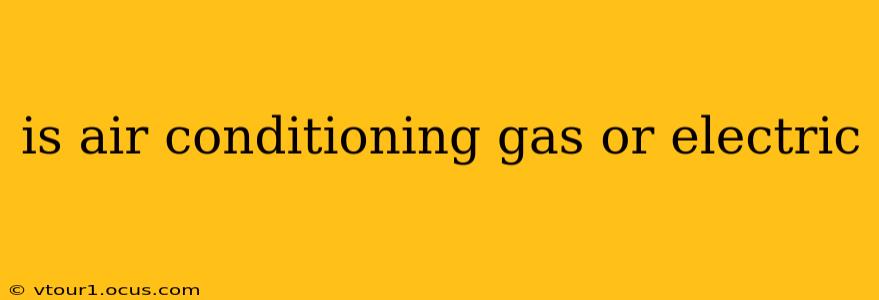Air conditioning systems aren't simply "gas" or "electric"—they're a complex interplay of both! The truth is far more nuanced, and understanding this distinction is crucial for anyone looking to purchase, maintain, or simply learn more about these essential home comfort systems. This article will delve into the mechanics of air conditioning, clarifying the roles of electricity and refrigerant (often mistakenly called "gas").
What Powers Air Conditioning?
The primary power source for all air conditioners is electricity. This electricity powers the compressor, the fan motors (both inside and outside units), and the control systems. Without electricity, your AC unit won't function.
What is Refrigerant and Why is it Important?
The "gas" people often refer to is actually a refrigerant, a crucial component in the cooling process. Refrigerants are special fluids that absorb heat from inside your home and release it outside. They are not a fuel source but rather a working fluid within a closed system. Common refrigerants include R-410A and R-32, but there are several others, and the specific type used depends on the age and model of your air conditioner.
While the refrigerant facilitates cooling, it's the electricity that drives the entire refrigeration cycle. The compressor, powered by electricity, compresses the refrigerant, raising its temperature and pressure. This hot, high-pressure refrigerant then releases heat outside your home via the condenser coil. The refrigerant then expands, cooling down significantly, and absorbs heat from inside your home through the evaporator coil before restarting the cycle.
What are the Different Types of Air Conditioners?
The distinction between gas and electricity also becomes relevant when considering different air conditioning system types:
-
Central Air Conditioning: This is the most common type in homes. It uses electricity to power the entire system, including the compressor, fans, and refrigerant circulation. It requires ductwork to distribute cool air throughout the house.
-
Window Air Conditioners: These units are simpler and also rely on electricity. They are self-contained units installed in windows.
-
Portable Air Conditioners: These units, like window units, are electric and self-contained. They often use a vent hose to exhaust hot air.
-
Heat Pumps: While often categorized separately, heat pumps are essentially air conditioners that can also heat your home by reversing the refrigeration cycle. They, too, are electric.
How Does the Electricity and Refrigerant Work Together?
The electricity and refrigerant work in a synergistic relationship. The electricity provides the energy to drive the refrigerant through its cycle, enabling it to absorb and release heat. Think of electricity as the engine and refrigerant as the fuel, though the refrigerant isn’t actually consumed like fuel in a combustion engine. Instead, it's continuously recycled within a sealed system.
What are some common problems with Air Conditioners?
Several issues can arise with both the electric and refrigerant aspects of your system:
-
Electrical problems: These can range from tripped breakers to faulty wiring or malfunctioning compressor motors.
-
Refrigerant leaks: These require professional attention for safe repair and refilling. Improper handling of refrigerant can be hazardous.
-
Compressor failure: This often necessitates a significant repair or replacement.
Understanding the intricate collaboration between electricity and refrigerant helps to troubleshoot problems more effectively and appreciate the engineering behind this essential home comfort technology. It's important to contact a qualified HVAC technician for any significant repairs or maintenance on your air conditioning system. They possess the knowledge and safety equipment to handle the system appropriately.
